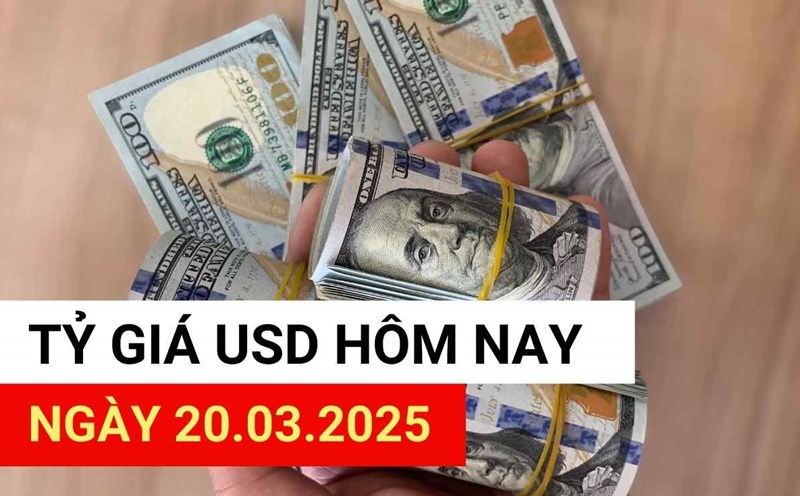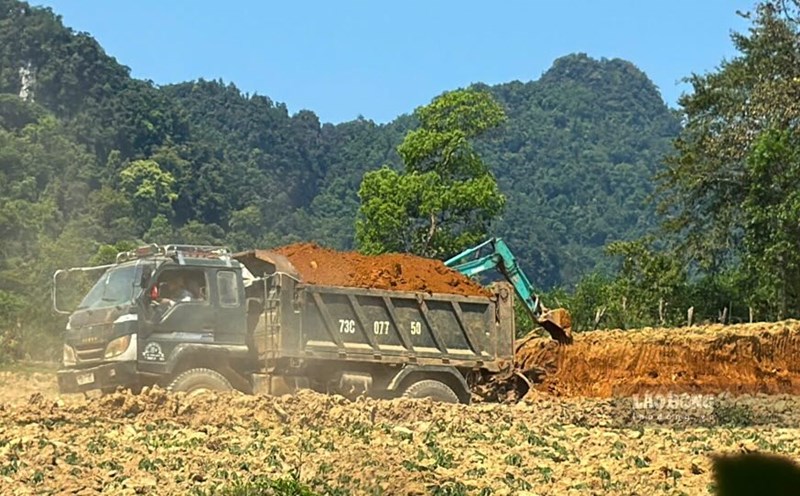Reflecting on changes in foreign currency supply and demand
On March 21, 2025, the State Bank of Vietnam (SBV) adjusted the reference USD selling price to VND 26,003/USD, exceeding the VND 26,000 mark for the first time. At the same time, the central exchange rate was also raised to 24,813 VND/USD, bringing the trading range of commercial banks to 23,572 - 26,054 VND/USD. This is a notable move, reflecting changes in foreign currency supply and demand and the exchange rate management strategy of the SBV in the current economic context.
In the market, the USD/VND exchange rate also recorded an upward trend. At commercial banks, the buying price ranges from 25,350 - 25,380 VND/USD, the selling price is commonly at 25,740 - 25,760 VND/USD. Compared to last weekend, the USD price has increased by about 50 VND and is approaching the peak of 25,780 VND/USD recorded in early March.
Although the USD/VND exchange rate tends to increase, Mr. Nguyen Quang Huy - CEO of the Faculty of Finance - Banking, Nguyen Trai University - affirmed that Vietnam still possesses strong supporting factors for the foreign exchange market.
Firstly, exports continue to grow positively, maintaining a super sustainable export state, thereby creating a stable foreign currency supply for the economy. Second, the influx of remittances from abroad to Vietnam is still at a high level, providing an abundant source of foreign currency for the banking system. In addition, the disbursed foreign direct investment (FDI) capital has continuously increased steadily, contributing to strengthening national foreign exchange reserves and reducing pressure on exchange rates.
Proactiveness in management
According to Mr. Nguyen Quang Huy, the SBV's adjustment to increase USD selling prices shows proactiveness and flexibility in operating monetary policy. This move aims to balance between supporting economic growth and controlling exchange rate risks, ensuring macroeconomic stability.
There are many reasons for the SBV's decision to adjust the exchange rate. One of them is international developments, as the USD strengthens due to the US Federal Reserve (Fed) maintaining a cautious monetary policy. In addition, the exchange rate adjustment also aims to control import inflation in the context of world commodity prices showing signs of increasing. At the same time, the SBV can take advantage of the opportunity to increase foreign exchange reserves and balance foreign currency supply and demand in the long term.
Mr. Nguyen Quang Huy said that the exchange rate increase will benefit exporting enterprises, helping them earn more VND when converting from USD, thereby improving profit margins. On the contrary, importing enterprises may face pressure to increase costs, requiring the optimization of operations and the use of reasonable exchange rate protection tools.
Overall, Mr. Huy commented that the exchange rate adjustment of the SBV did not cause too much fluctuation. This is a necessary step to maintain the stability of the foreign exchange market in the context of many international factors.
Mr. Nguyen Quang Huy predicted that in the short term, the foreign exchange market may continue to fluctuate according to international developments and capital flows. However, with a solid economic foundation, including trade unions, large rice flows and positive FDI disbursement, Vietnam has enough room to maintain exchange rate stability in the medium and long term.
He recommended that businesses and investors should closely monitor the operational policies of the SBV, while building flexible adaptation strategies to optimize benefits and minimize risks in the new context.











